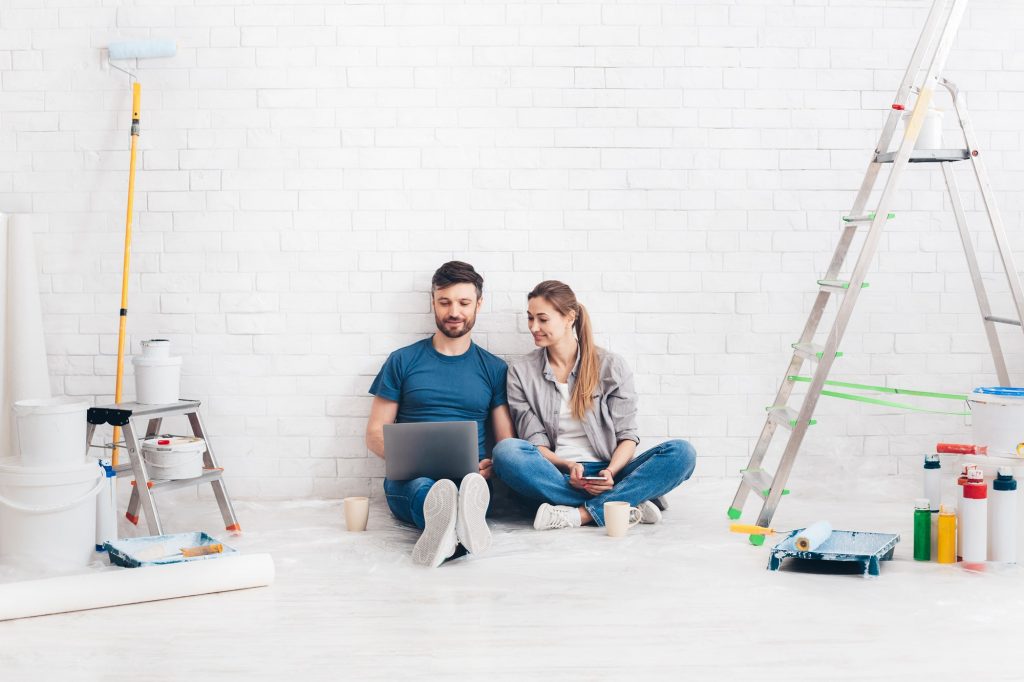People relocate for many reasons – moving for work, to be closer to family, to move to a better school district for their kids and more.
Once you turn the key in the lock and step over the threshold as a new homeowner, you’re entitled to bask in the revelation that you’ve bought a new home. However, next on your “things to do list” is just that – everything else you need to do.
How Can A Moving Checklist Help You Prepare For Your Move?
Creating a moving checklist ahead of time can help keep you organized. It’s true that you may not think of everything, especially once you actually see your home without the previous owner’s furniture in the living room or pool table in the basement.
Things To Do After You Move
Let’s take a look at some moving tips and how to handle certain things as soon as you move into your new home.
1. Schedule A Deep Clean
Your first thought may be to deep clean your new home. You can do it yourself or you may want to forgo scrubbing floors and hire a cleaning service instead. A cleaning service typically costs AED 50 – AED 100 per hour, depending on the size of your home, the location and the type of cleaning you need. It’s a good idea to interview house cleaners ahead of time before you make a decision about the cleaner you prefer.
2. Unpack Your Supplies
When you have moving boxes sitting around in every room in your house from the moving company, your first reaction may be to jump in and start taking things out of every box you see. You may want to resist that impulse, however, because it can get overwhelming quickly. It’s a good idea to consider having an organized system at hand, such as putting boxes that belong in each room and unpacking two at a time.
You may also want to consider unpacking the most important boxes first, such as kitchen and bathroom supplies. Prioritizing the rooms you’ll use the most will help you stay organized while you’re going through the process of unpacking.
3. Set Up Safety Measures For Kids And Pets
Is your new house safe for children and pets? Put up safety gates at the top and bottom of the stairs, add outlet covers, secure heavy furniture to the wall, keep furniture away from windows, stow long electrical and window cords and lock cabinets and windows to keep kids and pets out.
Keep cleaners and detergents, trash bins, heavy cookware and sharp objects out of reach. Keep any other dangerous packing supplies away from both kids and pets.
4. Change House Locks
It’s important for brand-new homeowners to change their house locks once they move in. You don’t know who has keys to the home besides the previous homeowner, who could have passed out a dozen copies of the keys and given them to various friends and neighbors. It’s better to put yourself in control of your home’s security. Get new house locks as soon as possible.
5. Test Your Smoke Detectors And HVAC System
Test your new smoke detectors and HVAC system. If there is a problem with either, it’s a good idea to get them checked out right away. You want to know that your heating, ventilation and air conditioning systems are working. If you move in the dead of winter or during the heat of summer, you’ll want to make sure your systems are working well.
6.Transfer Utilities
Make sure your utilities are turned off at your old residence, then make sure they are transferred or turned on at your new location. Consider researching utility providers ahead of your move to determine whether you’ve chosen the right provider for you. Depending on the company, you may need to pay a transfer fee and a new service setup charge. If you’re a new customer, check with the utility company to find out what you need to do to set them up.
Consider prioritizing by setting up utilities for the following:
- Water/sewer
- Gas
- Electricity
Once you’ve switched your service to a new home, a technician will come by to set up your utilities.
7. Set Up Connectivity – TV, Internet And Phone Services
Many providers can give you access to various connectivity services, such as TV, internet and phone. Some companies allow their customers to transfer services from one location to another, while others may force them to cancel the services at one place before setting up services at another. Once you’ve decided on a service provider, you can pay an installer or in some cases, such as installing internet or cable, you can do it yourself.
You may pay a relocation fee, depending on the company’s policies.
8.Schedule Home Improvements
What repairs do you need to make to your new home? Some repairs may require more attention than others, such as leaky pipes, structural issues, a roof that needs replaced, etc. Get any problems addressed sooner than later if they aren’t taken care of before move-in day. Consider prioritizing the home improvements you need to have done based on the seriousness of each issue. Painting a room likely ranks on a lower priority than a leaky roof, for example. Consider getting a list of contractors in the area and interview them as soon as you know you’ll need to make improvements to your new home.




